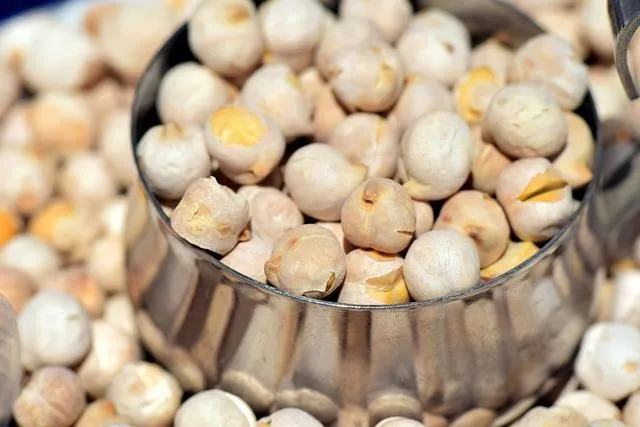
Garbanzo Beans
To peel or not to peel, that is the question
If you’ve ever cooked or soaked garbanzo beans (chickpeas), you’ve probably noticed those thin papery skins slipping off. Do you pick the loose skins out, throw them away, or even bother peeling? Is it really worth the effort? Let’s break down what peeling Garbanzo beans (chickpeas) can offer.
Let’s Talk Garbanzo Bean
What is a legume, Bean & Pulse?
Legume: the head of the family. Legumes produce seeds in pods, English peas are a great example of a legume pod. Legume can also be referred to as the entire plant.
Beans are a specific type of seed from a legume plant
Pulses are the dried seed of a legume.
So here’s the hierarchy: a legume is the plant → a pulse is the dried seed → a bean is a type of pulse (but a pulse is not necessarily a bean).
Legumes:
Peanuts, peas, lentils, and all types of beans are legumes.
Beans- Fresh Form:
kidney beans, black beans, lima beans, and soybeans.
Pulses:
Dry beans, dry peas (like chickpeas), and lentils.
Legumes are the head of the family, producing seeds in pods—like English peas. A bean is one specific type of seed from a legume plant. Pulses, on the other hand, are the dried seeds of legumes, which include lentils, chickpeas, and dry peas. So here’s the hierarchy: the legume is the plant, the pulse is the dried seed, and beans are a type of pulse (though not all pulses are beans). Crazy, right? Who knew? Now you do!
Now that we have the definition of what is a legume, bean and pulse. Now it's time to get to the point of this document. As I work in the kitchen preparing food for myself and others. The question to peel the skin from Garbanzo beans (aka chickpea) comes up. So here is how I peel back the fiber on this mighty little gem!
The skin of the garbanzo bean is made up of cellulose, pectin, and hemicellulose. Cooking and processing also help break down phytates (pronounced fi-tayts), natural compounds that reduce mineral absorption but also act as antioxidants.
For most people, the skins are totally fine because they contribute extra insoluble fiber, which helps with digestion, satiety, and blood sugar balance.
However, for sensitive guts, like those dealing with IBS, bloating, or other digestive disorders, the skins may feel heavy or harder to digest, which could trigger an IBS symptom. Insoluble fiber and phytates can sometimes irritate sensitive systems, which is why some suggest peeling them for recipes.
Is there a taste and texture difference? I believe there is, I have peeled and not peeled. I can tell you that a peeled garbanzo is easier on my digestion and makes an incredible hummus or addition to any meal or snack. I find when using them in dishes, such as hummus, not peeling hummus is grittier and thicker. By removing the skins, hummus now becomes creamy and fluffy. It's a trick I learned from one of my Israeli personal chef clients.
Does it take time, yes! Is it worth the time? Absolutely! I believe it is especially for digestive support on a weakened gut.
the FODMAP Factor?
Yes, chickpeas are considered a high FODMAP food. They’re rich in fermentable oligosaccharides (GOS), which are a type of fiber that can trigger bloating, gas, or discomfort in sensitive guts. But here’s the good news: not all chickpeas are equal when it comes to FODMAPs.
Canned chickpeas are often easier to tolerate than soaking and cooking them yourself. This is because the water-soluble FODMAPs leach out into the canning liquid. By draining and rinsing canned chickpeas thoroughly, you can significantly reduce their FODMAP content, making them friendlier for sensitive digestion. On the flip side, aquafaba, the thick liquid in the can, is very high in FODMAPs. While it’s a wonderful replacer for eggs in vegan/WFPB recipes, it is best to discard aquafaba if you are following a low FODMAP diet, as the FODMAPs leach into the liquid during canning.
So, if you’ve struggled with chickpeas before, try the trifecta: canned, well-rinsed, and skinned. You may find they’re not only easier to digest but also creamier and more enjoyable in your favorite dishes.\
Here is my recipe for traditional Hummus:
[Insert recipe here]
